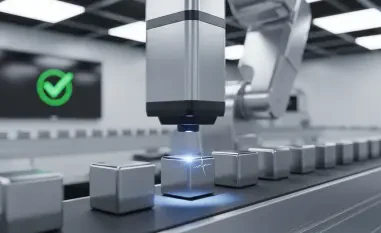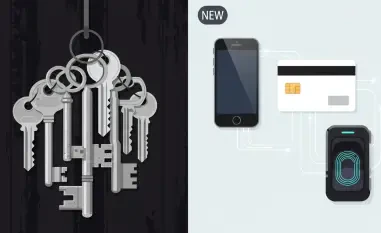The rapid evolution of digital technology in recent years has radically transformed how businesses manage access to their physical spaces, offering enhanced security protocols while optimizing operational efficiency. As businesses face increasing pressure to secure data and physical assets more effectively, the integration of digital access solutions has emerged as a key strategy in meeting these demands. Whether deployed in office buildings, industrial sites, or retail environments, the adoption of digital solutions marks a significant shift away from traditional methods, providing a streamlined approach to access management that addresses both security and workflow optimization.
The Rise of Digital Solutions in Access Management
Streamlining Processes
In the modern business landscape, the manual methods of managing access—often involving physical keys and paper logs—are giving way to digital technologies that offer greater efficiency and security. These traditional systems were not only cumbersome but also prone to human error, potentially compromising security. Digital access solutions streamline these processes by integrating various technologies into a cohesive system, enhancing overall management capabilities. By consolidating access management platforms, businesses can monitor and control entry points seamlessly, reducing the risk of unauthorized access and improving response times in emergency situations.
Moreover, digital access systems provide real-time data and analytics, allowing companies to track movement within facilities and identify potential security threats proactively. This level of oversight is crucial for maintaining high-security standards in industries that handle sensitive information or valuable assets. In addition to improving security, these technologies also aid in workflow optimization by reducing the time needed to manage access credentials, thereby freeing up resources for other critical functions. This efficiency not only enhances productivity but also contributes to a more agile and responsive business environment.
The Promise of Mobile Credentials
A significant trend in digital access management is the growing use of mobile credentials, which allow employees to use smartphones to gain entry to secure areas. This innovation elevates the convenience and flexibility of access management, making it easier for businesses to adjust permissions as needed. With mobile credentials, companies can swiftly issue, amend, or revoke access rights from any location, empowering facility managers to maintain control over entry points even when offsite. The seamless integration of mobile technology into existing access systems fosters an agile management approach that can adapt quickly to changing operational requirements.
Furthermore, mobile credentials enhance security by minimizing the risk of lost or stolen physical keys—a common vulnerability in traditional systems. The ability for staff to use personal devices as access tools also aligns with the pervasive trend of consumerization of IT, where individuals expect enterprise solutions to have the ease and functionality of consumer technologies. For businesses, this means the capability to enforce stringent security measures while meeting user expectations for smooth and intuitive interactions with technology. Companies with advanced digital maturity have already capitalized on this trend to drive revenue growth by increasing productivity and fostering innovation.
Practical Applications of Digital Access
Innovations in Office Environments
In office settings, digital access solutions have revolutionized how security is managed, leading to significant improvements in both safety and operational efficiency. For instance, at Canal+ near Paris, ASSA ABLOY’s digital systems have been integrated into multiple building technologies, creating a streamlined access management solution. This integration involves wireless digital solutions, such as Aperio handles and ABLOY security locks, which allow 1,200 employees and visitors to access the premises without compromising security. The system’s compatibility with the Genetec platform provides a single, simplified interface for managing building access, easing the burden on administrative staff and lowering operational costs.
Moreover, digital access solutions in office environments go beyond basic security functions. They offer data insights that help optimize space usage, reduce energy consumption, and enhance employee productivity by minimizing disruptions during daily operations. The ability to analyze patterns and trends in access data allows facility managers to make informed decisions about resource allocation and infrastructure improvements. As a result, companies can create a more efficient and adaptable work environment that supports collaborative and flexible work styles, which are increasingly favored in contemporary business practices.
Adapting to Diverse Industry Needs
Beyond office settings, digital access technologies are tailored to meet the specific needs of various industries, including manufacturing, retail, and shared workspaces. In Germany, for instance, the RheinfelsQuellen manufacturing site employs ASSA ABLOY’s eCLIQ system, designed to accommodate high-security requirements and diverse cylinder types across multiple locations. The system is managed via the CLIQ Web Manager, enabling real-time data access and flexible control across geographically dispersed sites. This adaptability is crucial for enterprises with complex operational structures, enhancing security while simplifying management processes.
Similarly, in smaller retail environments, like the Patio fashion boutique in Belgium, digital access solutions provide an effective deterrent against theft without requiring extensive infrastructure. Code Handle locks, operated by PINs, offer a straightforward security measure tailored to the scale and needs of smaller businesses. This scalability demonstrates the versatility of digital access technologies, making them suitable for a wide range of business environments. The adaptability of these solutions means they can be scaled up or down as business needs evolve, providing cost-effective security enhancements that align with the company’s strategic objectives.
The Future of Access Management
Balancing Security and Aesthetics
The integration of digital access solutions not only meets security needs but also considers aesthetic and functional aspects of modern workspaces. At Plexal in East London, a center for entrepreneurship and innovation, Aperio digital locks secure the premises while also transmitting real-time door status updates. This setup ensures the ongoing security of the workspace while maintaining minimal maintenance and energy costs. The unobtrusive design of these locks aligns with the building’s creative ethos, demonstrating that security measures can be both effective and visually harmonious.
As businesses continue to embrace flexible and dynamic workplace models, the demand for digital access solutions that blend security with design aesthetics is anticipated to grow. Modern organizations increasingly recognize that security infrastructure must complement the overall environment to foster productivity and innovation. Consequently, the development of aesthetically pleasing access solutions that integrate seamlessly into a building’s design will likely become a critical consideration for businesses invested in creating appealing and secure environments that attract talent and encourage collaboration.
Digitalization as a Strategic Initiative
In recent years, the rapid advancement of digital technology has fundamentally reshaped how businesses control access to their physical locations. This transformation not only bolsters security measures but also enhances operational efficiency. As companies face mounting challenges to better protect data and physical assets, integrating digital access solutions has become crucial. Whether implemented in office complexes, industrial areas, or retail spaces, adopting digital solutions signifies a major departure from traditional access management methods. This shift provides a more efficient pathway to manage entry and exit, streamlining processes while enhancing safety. These digital access systems offer a range of benefits, from remote management capabilities to real-time monitoring, ensuring that businesses can maintain high security levels without compromising workflow. As such, the deployment of these systems is rapidly becoming the norm across various sectors, underscoring the importance of leveraging technology to address modern security needs and improve overall organizational management.













